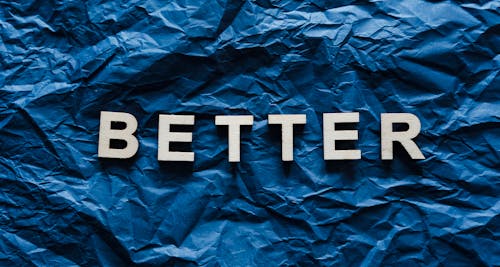
Photo Credit: Pexels.com
For decades, success in association conferences was often measured by size: more attendees, more sessions, more square footage, more exhibit booths. Bigger felt safer. Bigger looked impressive in board reports. Bigger suggested growth.
But as associations plan for 2026 and beyond, many are realizing that bigger is no longer synonymous with better. And, in some cases, it’s actively working against their goals.
Today’s conferences are being redesigned with intention: smaller footprints, higher engagement, smarter spending, and more flexible use of space. This shift is reshaping everything from agendas and budgets to one of the most visible components of any event; the exhibit hall.
Why “Better” Is Replacing “Bigger”
The move away from oversized conferences isn’t about retreating or scaling back ambition. It’s a response to real constraints and evolving expectations.
Attendees are more selective than ever. They want:
- Fewer but more relevant sessions
- Time for real conversations, not constant movement
- Clear value for their registration and travel investment
At the same time, associations are facing:
- Rising hotel and convention center costs
- Increased scrutiny around conference ROI
- Staff burnout from managing overly complex, multi-day events
The result is a growing realization that intentional design delivers better outcomes than sheer volume.
The Venue Sourcing Reality No One Can Ignore
Another major driver of this shift, one that planners are feeling acutely, is venue availability.
Hotels are increasingly reluctant to give up all (or even most) of their meeting space for a single group. Between transient business, multiple smaller groups, and revenue optimization strategies, many properties are prioritizing flexibility over buyouts.
Large conference footprints can now mean:
- Fewer viable venue options
- Higher minimums and more restrictive contracts
- Longer sourcing timelines with fewer favorable concessions
Smaller, smarter footprints immediately open up options.
When associations require:
- Fewer concurrent sessions
- Reduced exhibit space
- Flexible, multi-purpose rooms
They can access:
- Hotels that were previously “too small”
- More favorable dates
- Properties willing to negotiate on rates and concessions
In many cases, right-sizing the conference makes the difference between a difficult sourcing process and a competitive one.
Designing Smaller Footprints Without Losing Impact
A smaller footprint doesn’t mean less content or weaker engagement but instead means being more deliberate.
Some practical ways associations are achieving this include:
- Reducing concurrent sessions and offering repeated time slots for high-demand topics
- Designing general sessions that double as learning and engagement spaces, reducing the need for breakout rooms
- Using flexible room sets that shift throughout the day (education → networking → sponsor engagement)
- Building intentional breaks that encourage connection rather than rushing attendees between spaces
The outcome is often higher session attendance, better flow, and a conference that feels cohesive instead of fragmented.
The Traditional Exhibit Hall Is Evolving
Perhaps the most visible, and impactful, change tied to this shift is the rethinking of exhibit halls.
The traditional model made up of rows of identical booths spread across massive halls often leads to:
- Attendee fatigue
- Uneven traffic
- Sponsors competing for attention rather than connection
Instead of asking how to fill space, associations are asking a better question: How do we create meaningful sponsor–attendee interaction?
What’s Replacing Rows of Booths
Across the industry, we’re seeing exhibit halls evolve into curated engagement environments. Some specific examples include:
- Hosted Conversation Zones: Rather than booths, sponsors host facilitated discussions around specific challenges or trends. Attendees opt in based on interest, leading to deeper, more relevant conversations.
- Integrated Sponsorship Experiences: Sponsors are embedded into the program through: breakfast or lunch roundtables; learning labs or demos tied to real use cases; or sponsored lounges focused on peer connection.
These formats position sponsors as contributors, not interrupters.
Fewer Exhibitors, Higher Value: Associations are intentionally limiting the number of exhibitors and charging more for enhanced visibility, better placement, and curated interactions—often increasing revenue while improving the experience.
Multi-Use Spaces: Exhibit areas that transform throughout the day—coffee service in the morning, networking mid-day, receptions in the evening—maximize space and engagement without expanding square footage.
Comfort-Forward Design: Soft seating, better lighting, reduced noise, and space to actually talk all encourage attendees to linger. Longer dwell time equals better sponsor ROI.
The guiding principle is simple: conversations over carpet.
Why This Shift Supports Profitability
Counterintuitively, smaller footprints and reimagined exhibit spaces often improve financial outcomes.
Associations benefit from:
- Lower space and production costs
- Stronger sponsor renewals
- Easier venue sourcing
- More sustainable staff workloads
Sponsors benefit from:
- Higher-quality leads
- Clearer ROI
- Experiences that align with how people actually network today
Attendees benefit from:
- Less overwhelm
- More meaningful connections
- Conferences that feel worth their time and money
When experiences are well-designed and intentional, associations can confidently price them accordingly.
Bigger Isn’t Gone, but Better Is Leading
This evolution doesn’t mean growth is off the table. It means success is being redefined.
A “better” conference:
- Uses space strategically
- Designs engagement intentionally
- Aligns sponsor value with attendee needs
- Adapts to real-world venue and budget constraints
As associations plan for 2026 and beyond, the most successful events won’t be the biggest ones. They’ll be the ones that know exactly why each element exists and ultimately deliver value because of it.
In today’s environment, doing less — but doing it better — isn’t a compromise. It’s a competitive advantage.


